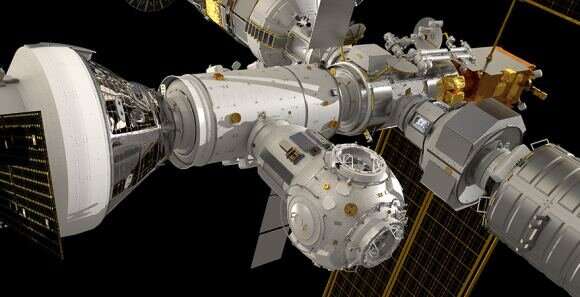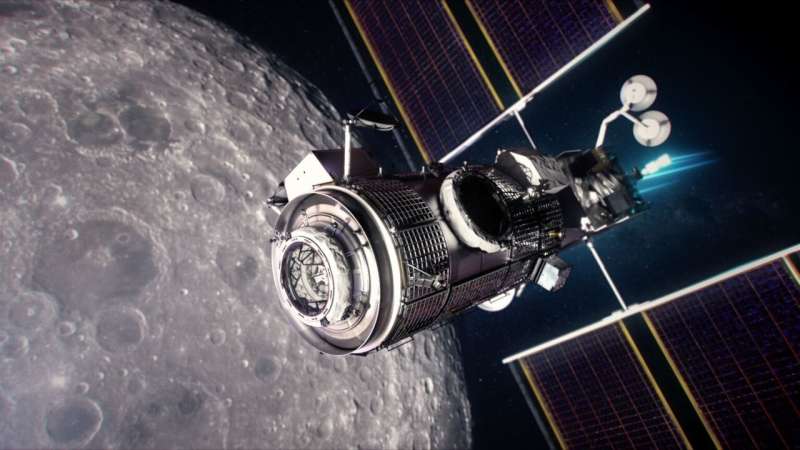This system is 30% more powerful than any previously built and flown by Maxar or Busek and will be combined with higher-power Hall effect thrusters to complete the PPE's 50 kW SEP system. Said Robert Curbeam, the senior vice president of space capture at Maxar Technologies:
"Busek's BHT-6000 electric thrusters offer high-power capabilities at a competitive price point and are a great fit for both our near-Earth and deep space programs. The SEP systems we are evolving for PPE are a fantastic example of innovative commercial technology with great flight heritage being leveraged for NASA programs. We continue to make steady progress on the Power and Propulsion Element, with the next major milestone being the spacecraft Preliminary Design Review, which is targeted for later this year."
The hot-fire test was funded by NASA's Space Technology Mission Directorate through their Tipping Point program. Every year, the STMD issues grants to commercial partners to foster the development of technologies that will advance commercial space capabilities and benefit future NASA missions.
In 2018, Maxar Technologies—formerly Space Systems/Loral (SSL) – was selected through Tipping Point to develop the power processing unit (PPU) that would power the 6 kW Hall thruster. Busek Co. is a long-time NASA partner renowned for its Hall effect satellite thruster technology. Past contributions include mini-electrospray thrusters for CubeSats and the ST7-DRS thruster system used by the LISA Pathfinder mission.
This recent test consisted of powering the system up and down several times and running various flight-like scenarios, the purpose of which was to demonstrate the system for operations around the moon. The multi-week test was the first time the hardware developed by Maxar and Busek operated as a fully integrated system and served to validate the dual-mode operations of the SEP up to power levels of 6 kW and 600 volts.
Said Mike Barrett, Power and Propulsion Element manager at NASA's Glenn Research Center:
"This is an exciting first step toward proving the PPE's propulsion system will meet Gateway's requirements. These thrusters will be critical in delivering the first elements of Gateway to lunar orbit and will help us create a dynamic exploration platform over Gateway's 15-year lifespan."
Once it is fully assembled and integrated, the PPE will be the most powerful electric propulsion spacecraft ever flown and will maneuver the Gateway around the moon. Paired with a reusable lunar lander, the Gateway will open up more of the lunar surface for exploration than ever before. Currently, the PPE and HALO are scheduled to launch together in 2024 aboard a Falcon Heavy in preparation for the Artemis III mission.
Beyond HALO, other modules will be added over time, like the European System Providing Refueling, Infrastructure and Telecommunications (ESPRIT), and the International Habitation Module (I-HAB). These modules are being developed by the ESA and JAXA in collaboration with French aerospace developer Thales Alenia Space—with additional contributions by NASA, and the Canadian Space Agency (CSA).

These modules will be launched by 2026 and 2027, respectively, and integrated with the Gateway while in lunar orbit. This station will be a vital part of NASA's Artemis Program, providing vital support for long-duration missions to the lunar surface. It will also facilitate partnerships with other space agencies (such as the ESA, CSA, JAXA, and others), carrying on in the tradition of the ISS.
Combined with a reusable lander, it will also for the creation of a base camp on the lunar surface where astronauts can conduct vital research in lunar conditions. Last, but not least, it will facilitate crewed missions to Mars in the coming decade, at which point it will no longer be a "Gateway" to the lunar surface, but to locations in deep-space as well.
Explore further

